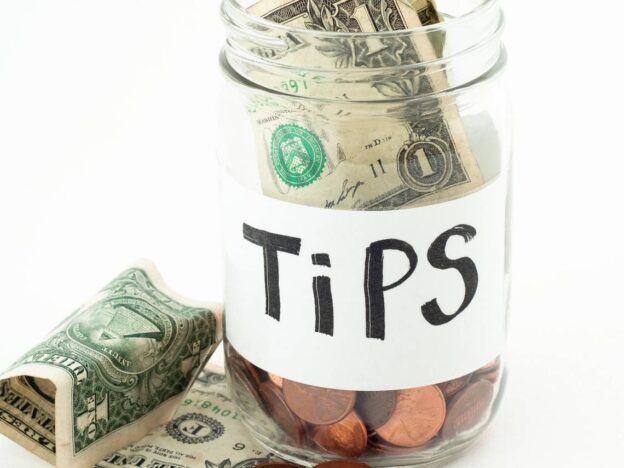I recently posted a Tip Guide for delivery orders on the Nextdoor app. The reactions I received were not surprising. Some responses were an affirmation of the goodness of people. Linda H. wrote:
“If someone is going to drive around in this heat and bring food to my door when I am EXHAUSTED, they get a tip on the app and a cash tip when they get there with my order. They don’t make enough to cover gas right now. Treat them well. They are doing what YOU don’t want to do.”
There were many others who were honest about how they didn’t value the service with which they were being provided. Devon A. writes:
“The world needs ditch diggers too….if it doesn’t meet your ideal job requirements…find another one and quit whining.”
Probably the most telling response though, came from Lisa H. who writes:
“I wonder how many people are just fed up with this whole tipping business? Seems everywhere you go now there’s a tip jar, even when the workers aren’t relying on tips.”
There is no doubt about it. People have reached a point of tip fatigue. Combine that with Uber’s early contribution of a “no tip necessary” mindset for their rideshare service and what we find ourselves with is a public weary of being asked to pay MORE, and some not feeling like they should.
Why do some people flinch when confronted with tipping while others give generously without being asked? In my opinion, it all has to do with gratitude and values. There are people who feel entitled to a service and do not care about the well-being of those who provide it. Others recognize and empathize with those who have made the choice to help them. The former say “if you don’t like it, get another job” while the latter say “thank you so much for being out in the heat (snow, rain) to bring me my food!”
I have concluded it certainly has nothing to do with means. I recently delivered an Outback meal to what charitably could be described as a tenement. This person could have had an excuse not to tip or to tip a nominal amount. Instead, she tipped $30 for a $150 meal. The same week, I delivered a $200 breakfast order up to almost the top of McDowell Mountain. The home was easily an $8 million dollar estate. The tip? $10
You can see by these examples, kindness or hardness is in the hearts of the people receiving service. We can’t fix those who are damaged and expect they will tip better but what we can do is not service them and encourage them to go pick it up themselves. For those who do tip, I put together a helpful guide. I’ve seen similar tip etiquette lists online but they seem to fall short on recognizing the value of certain services.
Tipping Scenarios
- For a sit-down meal a tip is part of the process. It has always been income that servers depend on. Rarely is it ever OK to stiff your server and should be reserved for the most egregious behavior. That being said, it is customary to tip between 18% and 25% and is based on your ability to tip and the quality of the service provided.
- Always tip your bartender!
- For food delivery, tipping is crucial. If you use a delivery app like Doordash, Grubhub, or Uber Eats, drivers are independent contractors, not employees. They are not making money unless their car is moving and may sit for 30 minutes or more waiting for a request. Drivers also pay all their own expenses and the full portion of FICA and Medicare taxes. We have included a Tip Guide on this site to show you what is an appropriate tip and how its calculated.
- Rideshare drivers should be tipped generously. Apps like Uber and Lyft pay drivers a per-mile rate that is LOWER than the IRS’s estimated vehicle operating costs. Add the fact that they are constantly moving to hot spots to get rides and you can understand how important your tip is.
- Service staff at hotels deserve a little thanks for their help. These people are paid employees so they have no expenses associated with the performance of their job. They can and do make your experience better and should be thanked for doing so.
- Restaurant “to go” staff work hard to prepare your order for take out. They package everything and provide you with what’s needed to make your take-out experience smooth and positive. Many times, these staffers could be earning tips by waiting tables but instead have taken time tending to your order. A tip of between 15% and 20% is customary.
I’m sure there are more scenarios not listed but I think you get the point. There are places I frequent where tip cups have suddenly appeared. I understand the motivation however, employees behind the counter are already paid to prepare and hand me my order. Service isn’t a factor in the performance of their job and their employer should be paying them enough to ensure I return to their business. That’s my general rule for tipping. If they are a 1099 contractor, its almost always appropriate to tip something. If they are a W-2 employee, its generally not necessary to tip unless the person materially helps you beyond the scope of their job OR the help they provide is physically demanding.
Cheers!
